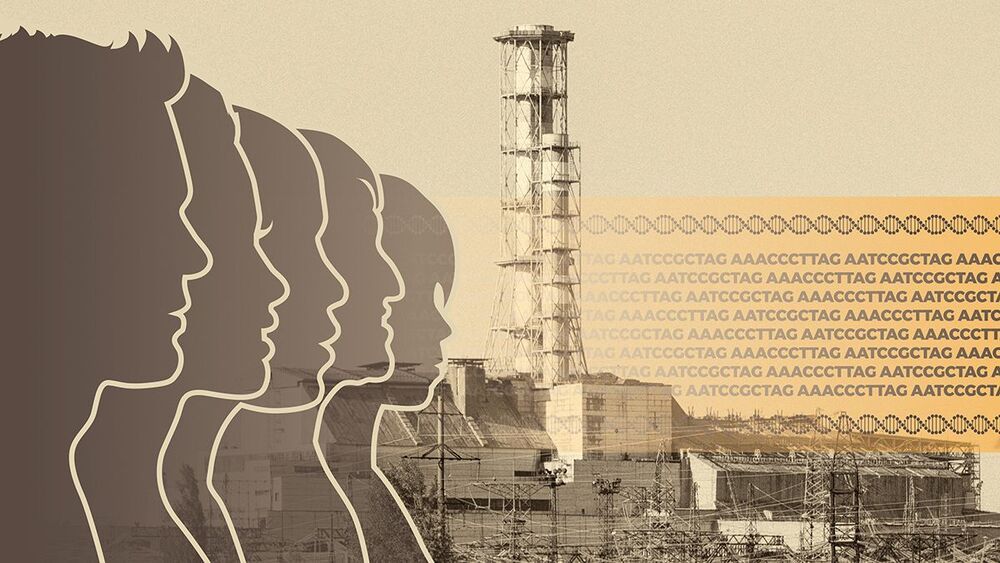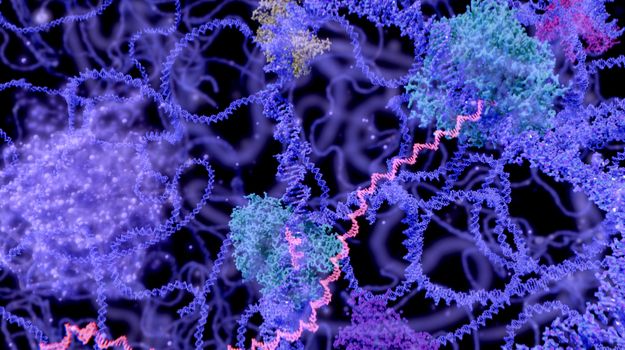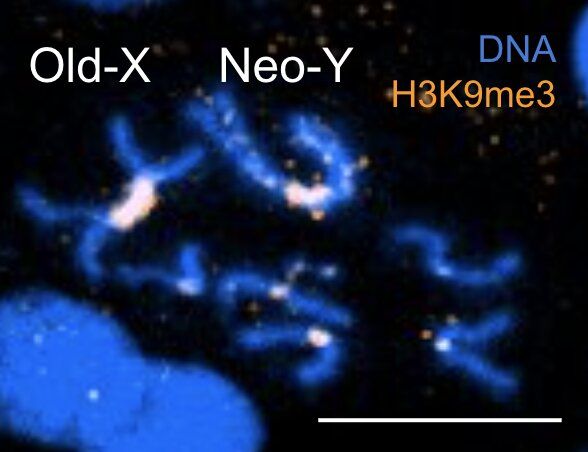The findings are published around the 35th anniversary of the nuclear disaster.



But the biotech industry has argued that much of gene-editing simply accelerates processes that occur naturally, and that GMO-style regulation would shackle efforts to develop sustainable crops or advance research into human disease.
The European Commission launched a review of EU rules on genetically modified organisms (GMOs) on Thursday, opening the door to a possible loosening of restrictions for plants resulting from gene-editing technology.
Prompted by a 2018 ruling from the European Union’s top court that techniques to alter the genome of an organism should be governed by existing EU rules on GMOs, the Commission concluded that its 2001 legislation was “not fit for purpose”.
Gene-editing technology targets specific genes within an organism to promote certain characteristics or curb others, while genetic modification involves transferring a gene from one kind of organism to another.

O,.o What a cure for cancer! o.o
Researchers are leveraging the messenger RNA (mRNA) technology used to develop the Pfizer-BioNTech and Moderna COVID-19 vaccines for possible treatments for a range of other diseases, including HIV and cancer.
This has long been thought possible with mRNA technology, but infectious diseases were something of the low-hanging fruit, and the COVID-19 pandemic drove the innovations.
MRNA technology is a way of exploiting the body’s own genetic blueprints. Traditional vaccines used either living or dead viruses to train the immune system to recognize viruses the next time they encounter them. The COVID-19 mRNA vaccines instead use the genetic code for a piece of the virus—the spike protein—and cause the body to generate the spike proteins, which trains the immune system to recognize the virus.

Why not add a light switch instead?
This month, a team from the University of California, San Francisco (UCSF) reimagined CRISPR to do just that. Rather than directly acting on genes—irrevocably dicing away or swapping genetic letters— the new CRISPR variant targets the biological machinery that naturally turns genes on or off.
Translation? CRISPR can now “flip a light switch” to control genes—without ever touching them directly. It gets better. The new tool, CRISPRoff, can cause a gene to stay silent for hundreds of generations, even when its host cells morph from stem cells into more mature cells, such as neurons. Once the “sleeping beauty” genes are ready to wake up, a complementary tool, CRISPRon, flips the light switch back on.

Cryopreservation, or the long-term storage of biomaterials at ultralow temperatures, has been used across cell types and species. However, until now, the practical cryopreservation of the fruit fly (Drosophila melanogaster)—which is crucial to genetics research and critical to scientific breakthroughs benefiting human health—has not been available.
“To keep alive the ever-increasing number of fruit flies with unique genotypes that aid in these breakthroughs, some 160000 different flies, laboratories and stock centers engage in the costly and frequent transfer of adults to fresh food, risking contamination and genetic drift,” said Li Zhan, a postdoctoral associate with the University of Minnesota College of Science and Engineering and the Center for Advanced Technologies for the Preservation of Biological Systems (ATP-Bio).
In new research published in Nature Communications, a University of Minnesota team has developed a first-of-its-kind method that cryopreserves fruit fly embryos so they can be successfully recovered and developed into adult insects. This method optimizes embryo permeabilization and age, cryoprotectant agent composition, different phases of nitrogen (liquid vs. slush), and post-cryopreservation embryo culture methods.
CEO of Turn. Bio at 3:40 talking about getting product to market in a few years rather than a decade.
#ERA #sebastiano #turnbio #krammer #stanford #healthspan #aging #longevity.
Ms. Anja Krammer, CEO of Turn Biotechnologies talks about the initial targets for ERA, the time line for clinical trials and FDA approval.
Turn Bio was co-founded by Dr. Vittorio Sebastiano to develop and market the Epigenetic Reprogramming of Aging technology that came out of his lab in Stanford University.
Ms. Krammer is a veteran of F500 healthcare and technology companies and co-founder of three Silicon Valley start ups. She is an entrepreneur who has built biotech, pharmaceutical and consumer businesses by assembling high-performance, results-driven teams and a counsellor to multiple enterprises, who has served on boards of public and private companies, industry organizations and foundation.
Turn Biotechnologies, Inc.
https://www.turn.bio/
Paper on ERA Technology.
https://www.nature.com/articles/s41467-020-15174-3
More papers by Dr. Sebastiano.
http://med.stanford.edu/sebastiano/publications.html
The only thing bad about Star Trek was they made the Borg evil.
Emerging technologies have unprecedented potential to solve some of the world’s most pressing issues. Among the most powerful — and controversial — is the gene-editing tech, CRISPR-Cas9, which will improve agricultural yields, cure genetic disorders, and eradicate infectious diseases like malaria. But CRISPR and other disruptive technologies, like brain-machine interfaces and artificial intelligence, also pose complex philosophical and ethical questions. Perhaps no one is better acquainted with these questions than Peter Diamandis, founder of the XPRIZE Foundation and co-founder of Singularity University and Human Longevity Inc. In this session, Peter will give a state of the union on the near future and explore the profound ethical implications we will face in the ongoing technological revolution.
This talk was recorded at Summit LA19.
Interested in attending Summit events? Apply to attend : https://summit.co/apply.
Connect with us:
Great episode from a great channel and creator. Though I’m sure almost everyone here is familiar with the channel in question, It’s still worth pointing out subscribing and supporting even if only 1 or 2 people who otherwise haven’t heard it get the opportunity to do so!
Get a free month of Curiosity Stream: https://curiositystream.com/isaacarthur.
As Humanity moves into the future, traveling to other worlds and exploring genetics, AI, transhumanism, and cybernetics, we may begin to diverge into a thousand post-human species.
Visit our Website: http://www.isaacarthur.net.
Support us on Patreon: https://www.patreon.com/IsaacArthur.
Facebook Group: https://www.facebook.com/groups/1583992725237264/
Reddit: https://www.reddit.com/r/IsaacArthur/
Twitter: https://twitter.com/Isaac_A_Arthur on Twitter and RT our future content.
SFIA Discord Server: https://discord.gg/53GAShE
Listen or Download the audio of this episode from Soundcloud: Episode’s Audio-only version: https://soundcloud.com/isaac-arthur-148927746/post-human-species.
Episode’s Narration-only version: https://soundcloud.com/isaac-arthur-148927746/post-human-species-narration-only.
Credits:

Over the last 60 years, scientists have been able to observe how and when genetic information was replicated, determining the existence a “replication timing program,” a process that controls when and in what order segments of DNA replicate. However, scientists still cannot explain why such a specific timing sequence exists. In a study published today in Science, Dr. David Gilbert and his team have answered this 60-year-old question.
“Why would cells care about the order in which they replicate DNA?” asked lead scientist Dr. Gilbert. “After all—all cells need to replicate all their DNA. Our hypothesis has been that it’s not just DNA that replicates, but all of the regulatory molecules that read the DNA replicate as well.” Dr. Gilbert further hypothesized that there might be a purpose behind the replication timing program and process because “mother nature would not squander this opportunity to control how the DNA is read.”
“The time at which you replicate provides an ideal time at which to choose whether to maintain all the regulatory factors and continue with the same functional interpretation of the information in DNA or change it to elicit new functions,” explains Dr. Gilbert.

Males may have shorter lifespans than females due to repetitive sections of the Y chromosome that create toxic effects as males get older. These new findings appear in a study by Doris Bachtrog of the University of California, Berkeley published April 22 in PLOS Genetics.
In humans and other species with XY sex chromosomes, females often live longer than males. One possible explanation for this disparity may be repetitive sequences within the genome. While both males and females carry these repeat sequences, scientists have suspected that the large number of repeats on the Y chromosome may create a “toxic y effect” that shortens males’ lives. To test this idea, Bachtrog studied male fruit flies from the species Drosophila miranda, which have about twice as much repetitive DNA as females and a shorter lifespan. They showed that when the DNA is in its tightly packed form inside the cells of young male flies, the repeat sections are turned off. But as the flies age, the DNA assumes a looser form that can activate the repeat sections, resulting in toxic side effects.
The new study demonstrates that Y chromosomes that are rich in repeats are a genomic liability for males. The findings also support a more general link between repeat DNA and aging, which currently, is poorly understood. Previous studies in fruit flies have shown that when repeat sections become active, they impair memory, shorten the lifespan and cause DNA damage. This damage likely contributes to aging’s physiological effects, but more research will be needed to uncover the mechanisms underlying repeat DNA’s toxic effects.